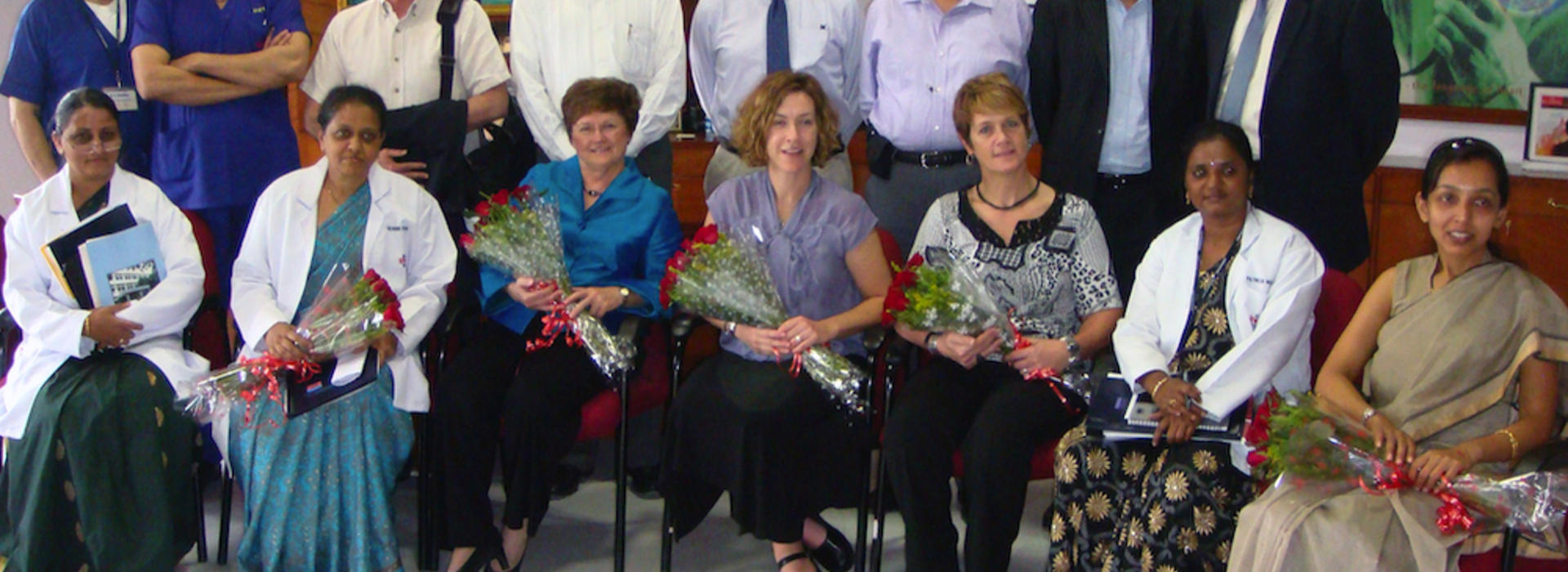
International Collaboration Behind Guidelines for Emergency Ventilators in India
Throughout the COVID-19 pandemic, governments and healthcare systems alike have reallocated resources to ensure patients have access to a ventilator. Despite these efforts, many regions experienced a severe shortage, and with supply chains disrupted, countries have been developing locally sourced, inexpensive ventilators to save as many lives as possible. As this scenario played out in India, it was also imperative to develop minimum guidelines to safely use these ventilators on patients.
“We wanted to publish an article available for free distribution outlining the minimum requirements, safety issues and complexities of making and using these ventilators,” said Kumar Belani, MD, a professor in the University of Minnesota Medical School’s Department of Anesthesiology. “The journal actually requested that we do it as quickly as possible.”
The paper, “Development of Safe and Effective Indigenous Intensive Care Unit Ventilators for COVID-19 Pandemic,” was published in the Indian Journal of Respiratory Care and co-authored by Dr. Belani and collaborators Anup Daniel Varghese, MD, Sanjay Orathi Patangi, MD, and Muralidhar Kanchi, MD, of Narayana Health, a top-rated healthcare system in Bengaluru, India.
Minimum Standards for a Complex Lung
“The COVID-19 lung is not simple, and thus, you can’t use simple homemade ventilators on these patients,” Dr. Belani said. “You need sophisticated ventilators.”
One of the most consistent clinical findings in severe COVID-19 infections is alveolar damage, which requires treatment with ventilators that have the ability to alter tidal volumes, provide constant driving pressure and optimum positive end-expiratory pressure to improve the condition and avoid further damage to the lung. To minimize further harming these delicate lung systems, the paper outlines the safety requirements for locally sourced ventilators, one being the need for battery backup in case of a power outage.
“In many of the smaller hospitals, they use generators for electricity backup, but even those can have a shortage,” Dr. Belani said.
Modern intensive care units (ICUs) have medical gas supplied to ventilators through a pipeline, which incorporate safety measures in case there are fluctuations in gas pressure. During the pandemic, however, field hospitals and makeshift units might not have a piped gas supply, meaning ventilators developed for emergency use should be able to function using gas from cylinders. This is also important if the patient is being transported between locations.
“These homemade ventilators are usually used for transport from home to the hospital,” Dr. Belani said. “That provides some steady mechanical ventilation which is critical during transport.”
The paper also outlines standards for the control unit, the interface between the user and machine, including various modes of ventilation. India’s Medicines and Healthcare Regulatory Agency (MHRA) requires a single volume and pressure control mode for emergency use, while some more advanced ventilators may include adaptive responses to achieve the desired volume and pressure. Power failure, oxygen monitoring and cleaning and disinfection protocols are also outlined in the paper.
“There’s some standardization through MHRA requirements,” Dr. Belani said. “The Indian hospitals that are using ventilators are using sophisticated ones because the disease is so progressed in the lung.”
Several universities and engineering firms have been called upon to source these innovations globally. In the U.S., the University of Minnesota, Massachusetts Institute of Technology (MIT) and University of California San Diego developed emergency ventilators that automate the Artificial Manual Breathing Unit (AMBU) using an open-source design and basic monitoring. In India, universities like the Indian Institute of Technology and the All India Institute of Medical Sciences, Rishikesh, are developing a low-cost portable ventilator following MHRA mandates.
“To date, I think they’ve been able to meet the demand,” Dr. Belani said. “We wanted to make it clear that even when you’re desperate, it’s better to use systems that meet minimum standards. Physicians are very careful before jumping into something new that they’re not familiar with.”
An International Collaboration
The collaboration between Narayana Health and the University of Minnesota that made this research possible goes far back, before the pandemic. With the partnership of Dr. Belani, the University of Minnesota formed a formal collaboration with Narayana Health’s founder, Devi Shetty, MD, which allows students and faculty from both countries to learn from one another in-person and virtually.
“We signed a master agreement that allows trainees and faculty to exchange within the Medical School and M Physicians,” Dr. Belani said.
The Medical School and M Physicians have been instrumental in supporting joint workshops and webinars, including the International Transesophageal Echocardiography Workshop, which has sent U of M Medical School anesthesiologists to India to speak for the last 15 years. Many of the University’s leaders have also visited Narayana Health to draw insights around value-based, affordable care.
In terms of education, the Department of Anesthesiology offers trainees an elective rotation at Narayana Health or St. John’s Medical College, another formal partnership in India. The Center for Global Health and Social Responsibility also directs the Global Medical Education and Research Program, which arranges six student externships between the U and St. John’s Medical College annually. These formal collaborations have made research like Dr. Belani’s possible and advance shared goals.
“It’s wonderful that the University is connected to a place like Narayana Health and St. John’s Medical College that’s open to faculty and students to interact,” Dr. Belani said. “The credit goes to Drs. Paul Quie and Philip Peterson, who were co-directors of the Office of International Medical Education and Research. They were instrumental in realizing the vision of international collaboration, which has been an immense value for students that rotate at these institutions.”